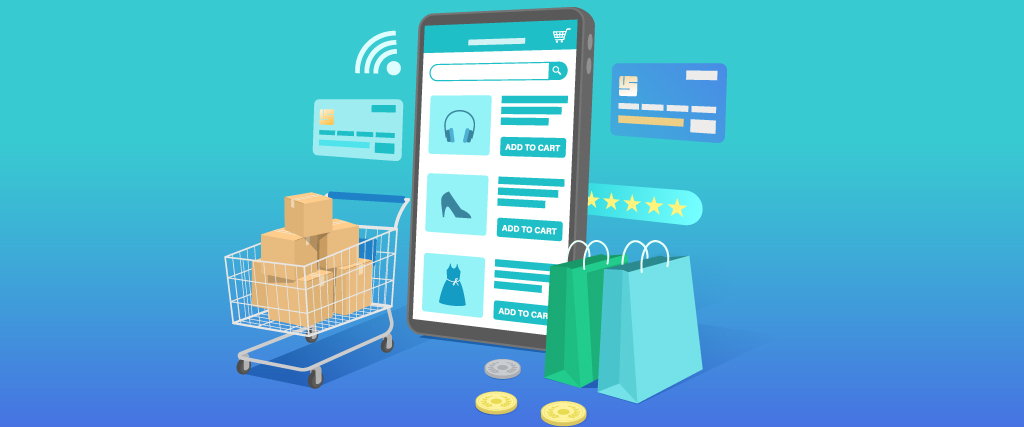Mobile Commerce Strategy: We are fully ensconced in the mobile revolution, and eCommerce and multi-channel managers must respond immediately. This part of our blog includes tools to help eCommerce decision-makers articulate the business case for mobile commerce.
This tutorial discusses the advantages and uses of mCommerce, how it facilitates sales, and how to build the argument for mobile.
Additionally, the article includes advice on team building and delves into the critical considerations involved in mobile site design. This is a priceless resource for eCommerce decision-makers.
What Is Mobile Commerce?
To develop a business case for mCommerce, it’s beneficial to first assess the mobile commerce prospects. Some define mCommerce as online sales or transactions conducted using a mobile device, such as a feature phone, a smartphone, or a tablet.
We propose considering the mCommerce potential more widely since there are a plethora of new methods to engage.
We feel that mCommerce is more than simply sales on mobile devices; we believe it serves as a key link between eCommerce and in-store buying and is being used by physical merchants to compete with the lower pricing normally associated with online shops.
By implementing an integrated mCommerce strategy based on ‘bricks and mobile clicks,’ physical retailers may enable consumers to take advantage of the typical advantages of online purchasing (product reviews, information, and discounts) while still shopping in the actual store.
Features of m-commerce applications in 2021
-
Push Notification
Push notifications are just marketing methods. If the proper message is sent to the user at the right moment, it might result in profit for the business.
It is a technique for connecting the mobile commerce app with the client through notifications. Any information the app wishes to transmit, such as discounts, offers, or new goods, may be accomplished through these notifications.
-
Profile of the User
User profiles are individual accounts created by users that enable them to check-in and get tailored alerts, updates, and offers.
This personalised touch enables the client and app to develop a more substantive relationship, as the app has the ability to read the user’s thoughts. The majority of the population finds this feature beneficial.
-
Integration of social media – Mobile Commerce Strategy
Instagram, Facebook, Twitter, and Snapchat have become an inseparable part of our life. And what all of these social media tools have in common is the adverts that accompany them.
Frequently, these advertising drive the client to the shopping company’s app, allowing the user to purchase the goods immediately.
-
Deals and Promotions
The most effective technique to impress someone is to inform them that something has been done just for them and to make them feel special.
Mobile commerce applications have perfected this expertise, and each day, users get tailored alerts about bargains and offer that have been specially chosen for them.
-
Numerous payment options
Assume a consumer browses the apps and chooses a product he or she adores. He adds the product to his cart and is ready to make the transaction. However, he is unable to locate a payment method that is open to him among the payment possibilities.
Thus, it is critical to have a variety of payment methods available to ensure that a prospective client does not depart just because he lacks the appropriate payment method. The many modes of payment include the following:
- Credit cards of all types
- Paypal
- debit card
- Wallets for Google Pay
- Apple Pay
- Samsung Pay
-
Customer Service
Customers encountering problems is an unavoidable element of a mobile commerce application. The difficulties may include payment troubles, purchasing issues, product exchange issues, and unsatisfying items, among others. As a result, customer assistance must constantly be accessible.
Future Trends in m-commerce
The number of individuals utilising mobile wallets has expanded dramatically in tandem with the growth of mCommerce. That is why mobile optimization is growing more prevalent in a variety of sectors and businesses.
With business prospects increasingly shifting to mobile devices rather than PCs and other forms of media, it’s reasonable to conclude that the future of m-commerce is bright.
You, too, must embrace change if you want to live and prosper in today’s linked society.
Even if you are just getting initiated, a mobile application will enable you to better meet your consumers’ rising demands.
The following developments will enhance the mobile commerce experience over the next few of years:
- Personal assistants
- Integrated Payments
- Live Chats
- Predictive search
- Virtual reality and augmented reality voice search
Mobile Commerce Strategy
There is little question that mobile commerce is intensifying, with over half of organisations already feeling the effect of changing customer behaviour and the advent of digital disruptors, among other factors, and the remaining 50% anticipating an even bigger impact.
According to research, the majority of businesses do not have a mobile commerce strategy, despite the fact that mobile spending is expected to climb by 20% over the next four years.
As a result, there is the intention but no sense. As a result, the following are seven critical tactics, in no particular order of priority:
- Make mCommerce a strategic boardroom mandate, regardless of the industry in which you operate.
- Ascertain that mobile services improve users’ lifestyles. That the services are in fact beneficial and usable.
- Connect the dots across channels with mobile to achieve omnichannel. Create no further channels.
- Capture data, especially location data, and utilise analytics and insight to tailor experiences, optimise performance, and quantify the return on investment. Mobile data should be matched and married to all other client data. Create a data lake, not another data puddle.
- Utilize digital marketing technology that functions as a single platform for points two through four to save operational costs, increase agility, and ensure brand message consistency.
- Do not cede control of your plan to a creative marketing firm. Take command.
- Take a look at and learn from the mobile industry’s masters: Nike, Coca-Cola, and Samsung.
Take Away
Mobile will continue to increase in popularity as an increasing number of individuals depend on their smartphones for the majority of their digital demands. Additionally, integrating more AI into mobile experiences will improve how customers connect with companies.
If you are looking for an m-commerce app for your business, you can contact Yugasa Software Labs. They are experts when it comes to mobile app development. To know more, you can visit their website.
Read More: LAUNCH YOUR FIRST SUCCESSFUL APP IN 2021
























